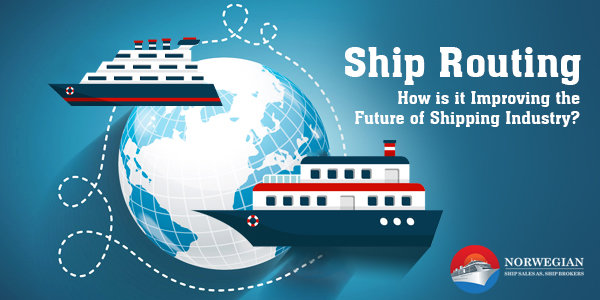The recent acquisition of Nautisk by STormGeo means the routing will look very different in the coming years and will also be delivered differently than what it is today. Ships are going to be connected much more digitally than now and there will be increased availability of high-speed internet connection. Thus, suggestions can be sent in a format directly to the Electronic Chart Display and Information System, instead of the Master requiring to load them manually. To help this to be a success, all the routing services are being integrated with the voyage planning and the route transfer directly to the Electronic Chart Display and Information System.
Instead of the present system of using Bon Voyage System(BVS) to send a route to the operations centre from the vessel, and after evaluation, sending a route back to the BVS, the future consists of passing back and forth complicated route plans to address the weather or environmental concerns. And due to the efficient running of the ship due to improved communications, weather data and sea-keeping data, the operating expenses will come down as well.
And with the future trend of shipping consisting of operations of ships from the shore and as autonomous ships, the routing information is likely to be delivered to the shore-side facility than the ship itself. And for the crew on board, the projection of information will be on the bridge windows in a 3-D overlay type, thus helping to improve the situational awareness.
With constant improvement of the vessel motion sensor technology, the date could be picked up by the routing systems of the ship and deliver more precise recommendations about vessel motions. The availability of precise vessel motion data helps in providing perfect safety to the crew, cargo and ship.
Ship Routing’s to Improve Fuel Efficiency
Other than the above-mentioned sensors, engine sensors will also be available that will provide information about engineering systems as well as the cargo in the ship. With the available sensors and data, it will become easy to optimize heating/cooling of cargo, change the heading and ship’s speed, and engage or disengage the shaft generator, thus lowering the liquid gas carrier sloshing and also lowering the risk involved in parametric rolling in the case of container ships.
Future ships will also have modern tools on both the onboard ship and in the shore-side operation centres to help in better management of constant power, and thus helping to improve fuel efficiency. Nowadays, the efficiency is limited due to certain human factors on-board.
Conclusion
There are certain safety and economic reasons in going for semi-autonomous shipping, which refers to ships whose navigation and engineering functions are being operated by the crew in a shore-side operations centre. The continuous checking of decisions from the shore-side operators means less human error. There are predictions that these remotely operated ships will be available as early as 2020, though the industry norm requires a fully autonomous ship in 2030.
Norship Sale offers ferries and cruise ships for sale and purchase. Intended buyers and sellers can browse the various ships on sale and purchase in their site and select the one that best suits their specific needs and budget.


